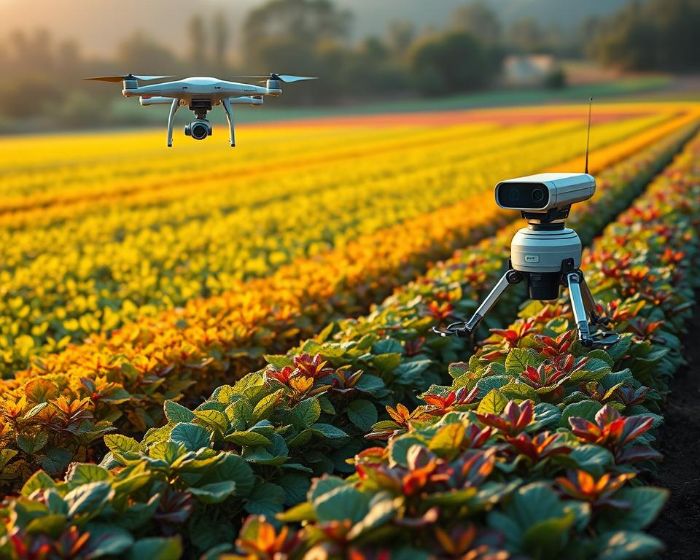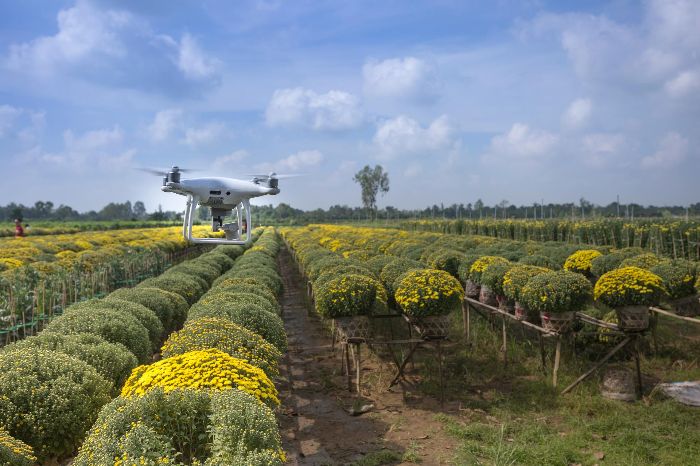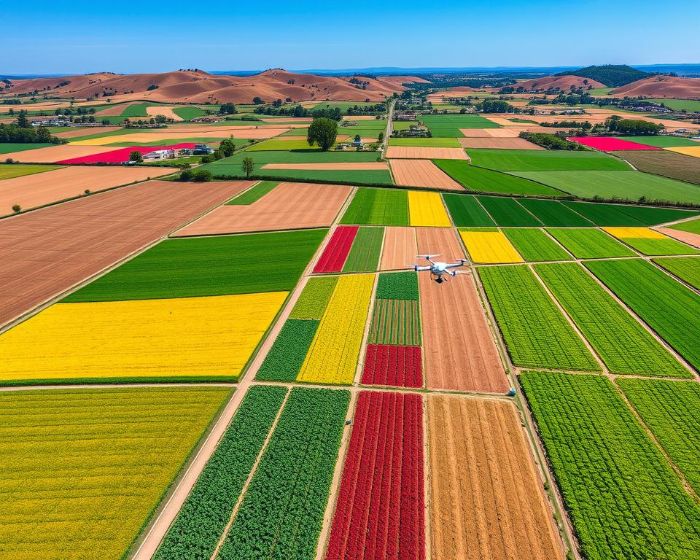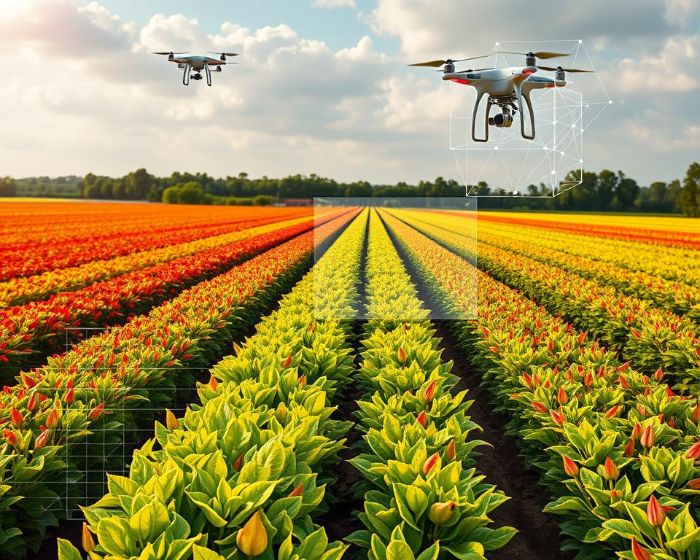Agriculture is increasingly challenged by pests, diseases, and shifting environmental conditions. A key question emerges: Can AI-driven pest management redefine how we protect crops and sustain productivity? Traditional methods often fall short, as pests develop resistance and the heavy use of chemicals degrades ecosystems.
Innovation in pest management has become critical for sustaining agricultural productivity. AI-driven technologies provide advanced solutions for early detection, precision targeting, and automated control. These innovations improve crop resilience while significantly reducing pesticide reliance. In this article, we explore the expanding role of AI in pest management, key benefits, emerging challenges, and future prospects.
Key Takeaways
- AI-driven strategies enable early pest detection and targeted interventions.
- Smart technologies reduce dependence on broad-spectrum pesticides.
- Precision pest control enhances agricultural efficiency and crop health.
- Automation improves resource management and operational efficiency.
- Integration of AI addresses pesticide resistance and sustainability goals.
- While challenges remain, the long-term benefits of AI adoption are significant.
Table of Contents
The Growing Need for AI in Pest Management
The agricultural sector faces mounting challenges in pest control that directly threaten both productivity and long-term sustainability. Traditional methods, heavily reliant on chemical interventions, are becoming increasingly ineffective. Overuse of pesticides not only accelerates pest resistance but also causes significant ecological damage.
Challenges in Traditional Pest Control Methods
Traditional pest control methods present several persistent challenges:
- Pests are increasingly developing resistance to pesticides, diminishing treatment effectiveness.
- Chemical interventions often harm non-target species and disrupt local ecosystems.
- Monitoring pest populations accurately remains difficult and labor-intensive.
These issues highlight the urgent need for innovative pest management strategies that sustain crop productivity while safeguarding environmental health.
Furthermore, public concern over pesticide residues in food and water supplies continues to grow, exerting additional pressure on agricultural producers to seek safer, more sustainable pest management approaches. AI-driven technologies offer an opportunity to move beyond reactive chemical treatments toward proactive, data-driven pest control solutions.
How AI Can Revolutionize Pest Management
Similar to its role in forecasting crop growth and yields, AI revolutionizes pest management through real-time detection and precision interventions. Predictive analytics models anticipate pest emergence patterns, enabling farmers to implement timely, targeted responses that mitigate infestations before they escalate.
Machine learning processes large volumes of agronomic and environmental data to identify optimal treatment strategies. When AI pinpoints infestations, integrating its insights with biological pest control methods minimizes chemical applications and preserves beneficial insect populations. This synergistic approach promotes sustainable farming practices and reduces ecological harm.
Early Detection and Prevention: Key to Effective Pest Control
Early pest detection is a critical pillar of effective pest management. AI-driven monitoring enables farmers to identify infestations at the onset, minimizing crop damage and reducing the need for extensive chemical treatments. This proactive approach strengthens crop resilience and promotes healthier ecosystems.
AI-powered IoT devices enhance real-time pest monitoring, delivering immediate insights that support rapid decision-making. By enabling faster interventions, these technologies protect crop health and contribute to long-term agricultural sustainability.
Early identification not only limits crop losses but also allows for more strategic resource allocation. Farmers can prioritize treatment areas, optimize pesticide applications, and integrate biological controls more effectively. AI systems learn and adapt over time, improving their predictive accuracy and offering even greater protection against evolving pest threats.
How AI Technology Detects Pests Early
AI technology has fundamentally changed the way farmers detect and respond to pest threats. Machine learning algorithms analyze extensive datasets to rapidly and accurately identify early signs of pest activity. By recognizing subtle patterns invisible to the human eye, AI enables more timely and targeted interventions.
As a result, farmers can intervene early, preventing localized infestations from escalating into widespread crop damage.
Use of Machine Learning Algorithms for Pest Identification
Machine learning models process visual data captured by drones, smartphones, and field sensors to detect and classify pests with high accuracy. This technology accelerates pest identification, enabling farmers to select the most effective treatment strategies with minimal delay.
For instance, platforms like Plantix leverage deep learning algorithms to diagnose crop diseases based on image analysis and provide farmers with actionable recommendations for treatment and prevention.
Image Recognition and Computer Vision in Pest Detection
By integrating satellite imagery for crop forecasting and area assessment with AI-driven image recognition, farmers gain broader environmental insights that enhance proactive pest management. This combination enables early pest detection, monitoring of crop stress indicators, and strategic intervention planning based on real-time field conditions.
Computer vision systems empower farmers to develop more precise pest management plans, resulting in improved crop vitality and reduced production losses.
Advances in multispectral and hyperspectral imaging further enhance AI’s ability to detect pest-related anomalies at an early stage. These imaging technologies capture data beyond the visible spectrum, revealing stress factors in plants before they manifest as visible symptoms. By combining such advanced imaging with machine learning models, farmers can make more informed decisions, protecting crop yields and optimizing resource use.
The Role of Sensors and IoT Devices in Real-Time Monitoring
The Internet of Things (IoT) enhances pest monitoring by deploying smart sensors across fields to collect critical environmental data such as humidity, temperature, and soil conditions. These real-time insights enable farmers to anticipate pest outbreaks more accurately and implement timely countermeasures.
When pest populations exceed predefined thresholds, IoT systems trigger automated alerts, allowing farmers to respond immediately. In advanced setups, AI-integrated platforms can autonomously initiate targeted pesticide applications based on real-time data analysis.
AI Tools and Platforms for Pest Management
Pest management is undergoing rapid transformation as AI tools and platforms redefine how farmers detect, monitor, and control pest threats. These technologies promote more sustainable approaches by reducing reliance on chemical-intensive methods.
Popular AI-Driven Pest Management Software
A growing range of AI-driven pest management software platforms is now available, offering farmers and gardeners more precise and sustainable pest control options. These tools optimize pesticide use, minimize waste, and enhance decision-making.
- Blue River Technology’s “See & Spray” – Utilizes advanced computer vision to identify and precisely target pest infestations, significantly improving the accuracy of pesticide applications.
- Rentokil’s PestConnect – A smart pest monitoring system that delivers real-time alerts and facilitates proactive pest management across various environments.
Integrating AI with Existing Agricultural Systems
Integrating AI into existing agricultural systems enhances operational efficiency by improving data collection, analysis, and application. AI-driven insights lead to better decision-making, reduced environmental impact, and more sustainable farming practices.
Integrating AI-powered crop rotation planning with Integrated Pest Management (IPM) strategies supports soil health, optimizes crop resilience, and reduces pesticide dependency, fostering a balanced agricultural ecosystem.
Mobile Apps and Tools for Home Gardeners
Mobile applications are increasingly empowering home gardeners by providing accessible, AI-driven pest identification and management tools. Apps like Plantix allow users to diagnose plant diseases and pests simply by uploading photos, offering tailored recommendations for treatment and prevention.
Benefits of Using AI for Pest Management
AI-driven pest management delivers multiple benefits, significantly enhancing both sustainability and efficiency in modern agriculture. By enabling more precise pest detection and intervention, farmers achieve better pest control outcomes while optimizing crop production and resource use.
Reduced Use of Pesticides and Chemicals
AI-driven systems help reduce pesticide usage by analyzing real-time pest data and guiding farmers toward targeted interventions. As a result, chemical applications are limited to situations where they are truly necessary, minimizing environmental impact and preserving beneficial insect populations.
Protecting beneficial insects contributes to overall crop health and fosters a more balanced and resilient ecosystem, supporting long-term agricultural sustainability.
Cost-Effective and Efficient Pest Control
AI-powered pest control solutions increase cost-efficiency by automating pest monitoring, detection, and analysis. This automation reduces labor costs, optimizes resource allocation, and accelerates decision-making processes.
Farmers can maximize resource utilization by rapidly assessing crop conditions and pest pressures, ensuring timely interventions that preserve both yield and operational efficiency.
Enhancing Crop Health and Yield through Early Intervention
Early intervention is critical for maintaining plant health and achieving higher yields. AI-driven predictive models monitor environmental conditions and forecast pest outbreaks, enabling farmers to implement preventive measures before significant damage occurs.
This proactive approach minimizes crop losses, enhances overall farm profitability, and supports the broader goal of sustainable pest management practices.
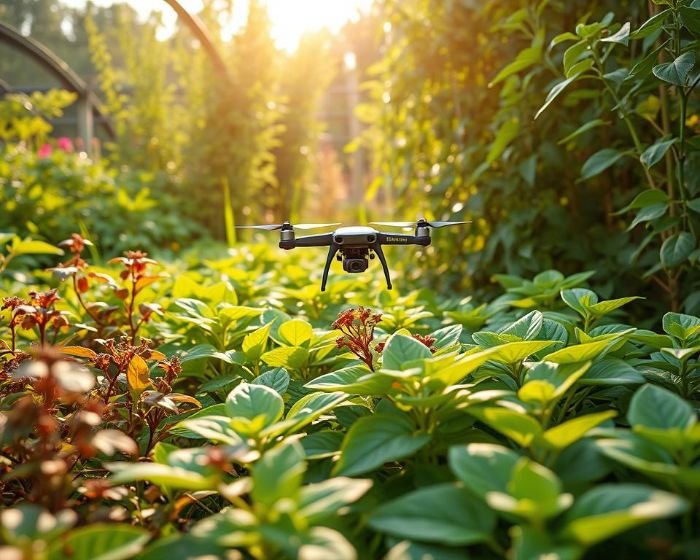
Challenges in Implementing AI-Driven Pest Management
Despite its potential, implementing AI-driven pest management presents several significant challenges. Key obstacles include ensuring data accuracy, managing high initial investment costs, and addressing gaps in farmer education and technological literacy. Successfully overcoming these barriers is essential for widespread adoption and long-term impact.
Data Accuracy and Quality Issues
High-quality, accurate data is critical for the effectiveness of AI-driven pest management systems. Inaccurate or biased datasets can compromise model reliability, leading to incorrect pest detection or ineffective interventions. Addressing this challenge requires rigorous data collection, validation processes, and continuous model retraining based on verified field observations.
High Initial Costs and Technology Access Barriers
The high upfront costs associated with AI implementation pose a major barrier, particularly for small and medium-sized farming operations. Expenses related to purchasing hardware, deploying IoT infrastructure, and maintaining advanced AI systems can be prohibitive. Expanding access to affordable technologies and offering financial support programs are critical steps toward equitable adoption.
Need for Farmer Education and Training
Effective farmer education and ongoing training initiatives are essential for successful AI adoption in pest management. Many agricultural workers lack familiarity with AI technologies, which can hinder effective utilization. Comprehensive training programs must focus on building digital literacy, practical application skills, and long-term technological confidence among farmers.
Partnerships between agricultural institutions, technology providers, and government agencies will play a crucial role in scaling education efforts and ensuring that farmers are equipped to maximize the benefits of AI solutions.
Future Trends in AI-Driven Pest Management
The pest management landscape is rapidly evolving due to advancements in agricultural AI technologies. Innovations such as predictive pest modeling enable farmers to anticipate outbreaks, implement timely interventions, and promote more sustainable farming practices.
Advances in AI Technology for Better Pest Prediction
Advances in AI technology are improving the accuracy of pest prediction models. By analyzing large datasets, AI systems forecast pest movements and population trends, enabling farmers to take preventive action and protect crop health more effectively.
Integration with Robotics for Autonomous Pest Control
The integration of AI with autonomous robotics is transforming pest control practices. Robotic systems equipped with AI can detect and eliminate pests independently, reducing labor requirements and enhancing crop protection. Companies such as Solinftec and Agrobot are leading examples of successful deployment in real-world agricultural settings.
AI-Driven Pest Management for Sustainable Agriculture
AI-driven pest management supports environmentally responsible agriculture by minimizing pesticide use and promoting ecosystem health. This approach enables farmers to increase food production while preserving natural resources and protecting biodiversity.
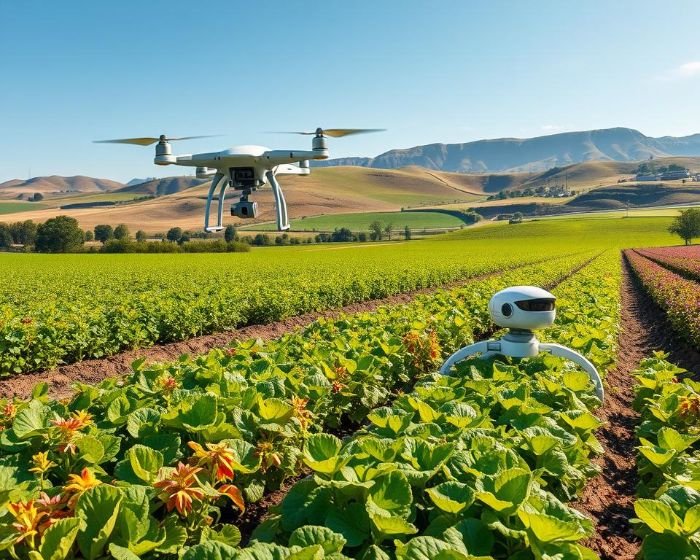
Getting Started with AI-Driven Pest Management
Implementing AI-driven pest management requires careful planning and strategic tool selection. Farmers must identify technologies that align with their specific operational needs, as pest management solutions can vary significantly depending on crop types, farm size, and regional conditions.
Choosing the Right AI Tools for Your Needs
When selecting AI tools for pest management, consider the following:
- Analyze your farm’s specific pest challenges and environmental conditions.
- Understand the vulnerabilities of your crop varieties to pest threats.
- Assess available resources, including technical infrastructure and budget constraints.
Partnering with reputable technology providers can streamline the selection process and ensure access to reliable, well-supported pest management solutions.
Steps to Implement AI Pest Management in Your Garden or Farm
To effectively implement AI-based pest management, follow these steps:
- Conduct a comprehensive assessment of your current pest management practices and challenges.
- Select AI tools that address identified needs and fit operational requirements.
- Provide thorough training for all team members on the new technologies.
- Establish robust data collection and management protocols to optimize AI model performance.
- Continuously monitor outcomes and refine strategies based on observed results and evolving conditions.
This advice helps farmers smoothly start using AI for pest control.
Resources and Support for Learning AI in Agriculture
Farmers seeking to expand their knowledge of AI in agriculture can access a variety of resources, including:
- Online courses covering AI fundamentals and agricultural applications.
- Practical workshops focused on AI tools and pest management technologies.
- Training programs offered by agricultural universities, extension services, and industry associations.
Leveraging these educational resources empowers farmers to make informed decisions and maximize the effectiveness of AI-driven pest management strategies.
Conclusion – Embracing AI for Smarter Pest Control
Agriculture is at a pivotal point where the adoption of AI-driven pest management strategies is essential for sustainable growth and resilience. AI empowers farmers to implement smarter, data-driven pest control methods that enhance productivity while protecting environmental health, as demonstrated by this Nature study on AI-based pest detection and prediction.
By enabling early pest detection and targeted interventions, AI reduces environmental impact and safeguards crop yields. Farmers who embrace these technologies position themselves for greater long-term success in an increasingly complex agricultural landscape.
As AI technologies continue to evolve, farmers will increasingly rely on data-driven insights for more precise and efficient pest management, leading to healthier crops, optimized resource use, and improved farm sustainability.
This change will help farmers work smarter. It will also make farming more sustainable. By using AI, farmers can grow food in a way that’s good for the planet.
In summary, adopting AI-driven pest management solutions offers a pathway to more productive, sustainable, and environmentally responsible agriculture. By embracing these innovations, farmers can secure a healthier future for both their crops and the ecosystems they depend on.
FAQ
What are AI-driven pest management strategies?
AI-driven pest management strategies leverage technologies such as machine learning and computer vision to detect, monitor, and control pests more precisely. This approach improves crop health while minimizing pesticide use.
How does AI help with early pest detection?
AI assists in early pest detection through image recognition, machine learning algorithms, and IoT-enabled real-time monitoring, allowing farmers to identify infestations at the earliest stages and prevent widespread crop damage.
What are some benefits of using AI for pest management?
The benefits of AI-driven pest management include reduced pesticide use, cost savings, improved crop health, and enhanced overall agricultural sustainability.
What challenges exist in implementing AI-driven pest management?
Key challenges include ensuring data accuracy, managing high implementation costs, and providing sufficient training and support for farmers to effectively utilize AI technologies.
How is machine learning applied in pest identification?
Machine learning processes large datasets and analyzes images captured by drones, smartphones, and sensors to accurately identify pest species and prioritize intervention areas.
What role do IoT devices play in pest management?
IoT devices monitor environmental conditions and pest activity in real time, providing critical data that enables AI systems to detect threats early and trigger timely alerts or automated responses.
Are there specific AI tools designed for home gardeners?
Yes, AI-based mobile applications like Plantix assist home gardeners by identifying pests and providing tailored recommendations for treatment and prevention.
What future trends can we expect in AI-driven pest management?
Future trends in AI-driven pest management include enhanced predictive analytics, greater integration with autonomous robotics, and a stronger focus on sustainability through reduced pesticide dependence and ecosystem protection.






